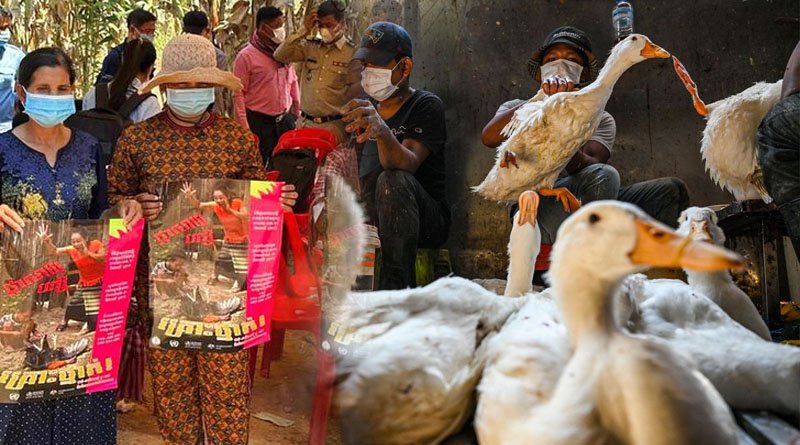These are the first cases of avian flu, known as H5N1, reported in Cambodia since a widespread outbreak in 2014 according to the World Health Organization (WHO).

The UN health agency said on Sunday that Cambodian authorities reported two cases of avian flu, including the death of an 11-year-old girl from the virus.
These are the first cases of avian flu, known as H5N1, reported in Cambodia since a widespread outbreak in 2014 according to the World Health Organization (WHO). In humans, the infection, which mostly affects animals, has a 50% mortality rate.
“The global H5N1 situation is concerning given the virus’s widespread spread in birds around the world,” said Sylvie Briand, Director for Epidemic and Pandemic Preparedness and Prevention at the United Nations Health Organization.
“We are in close contact with Cambodian authorities to learn more about the outbreak.” Because the virus is still being detected in poultry populations, more human cases are likely, according to the WHO. Almost all human H5N1 infections have been linked to close contact with infected live or dead birds or contaminated environments. “WHO takes the threat posed by this virus seriously and has urged increased vigilance in all countries,” she said.
Between 2003 and February 25, 2023, 873 human cases of H5N1 were reported in 21 countries, with 458 deaths. WHO, however, advises against imposing any travel or trade restrictions based on current information.
To date, evidence suggests that the virus does not easily infect humans, and that person-to-person transmission is unusual. In Cambodia, where the case was reported, a joint animal-human health investigation is already underway. Its goal is to determine the source and mode of transmission.
Meanwhile, a high-level government response is working to prevent the virus from spreading further, and an outbreak investigation is underway to determine how the two reported cases were exposed to the virus, according to WHO.
Cambodian health authorities notified WHO of the first case and death on Thursday. A young girl died from avian flu on Wednesday. They had reported the second case by Friday, noting that one of the girl’s family members had tested positive for the virus but was asymptomatic. In response to previous outbreaks, veterinary efforts to differentiate avian influenza strains were expanded throughout Asia.
FAO/Hoang Dinh Nam In response to previous outbreaks, veterinary efforts to differentiate avian influenza strains were bolstered across Asia.
The UN health agency monitors the virus’s evolution and conducts risk assessments through its Global Influenza Surveillance and Response System. WHO can also recommend the development of additional new candidate vaccine viruses for pandemic preparedness.
The agency emphasised the significance of global surveillance in detecting and monitoring virological, epidemiological, and clinical changes associated with emerging or circulating viruses that may have an impact on human or animal health.
There is currently no widely available vaccine to protect humans against avian influenza. To reduce potential risks, WHO recommends that all people who work with poultry or birds receive a seasonal influenza vaccination.
Almost a decade ago, the UN Food and Agriculture Organization (FAO) issued an urgent warning about an outbreak of H5N6 avian influenza in Southeast Asia. FAO issued another warning in 2015 about a dangerous outbreak of the highly virulent H5N1 strain, which had spread to five West African countries in six months. The agency had requested $20 million in emergency funds in order to “stop it in its tracks” before it harmed humans.
FAO reported at the time that the H5N1 strain had killed tens of millions of poultry and cost tens of billions of dollars. Since then, the agency has worked to improve veterinary systems and local laboratory capabilities.
By 2018, FAO had trained 4,700 veterinarians who worked in 25 countries across Africa, Asia, and the Middle East to protect farm animals from deadly viruses. For the first time, a 2003 H5N1 outbreak in Cambodia affected wild birds. Human cases due to poultry-to-human transmission have been reported sporadically in the country since then and until 2014.
Cambodia had reported 58 human infections with the H5N1 virus since 2003, including 38 deaths, as of February 25.
